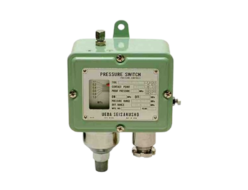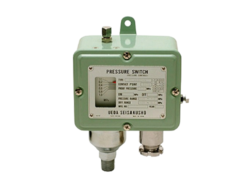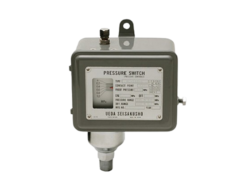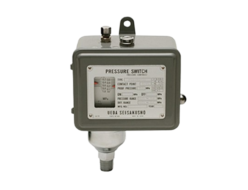Ueda Seisakusho
Ueda Seisakusho P Series Pressure Switch
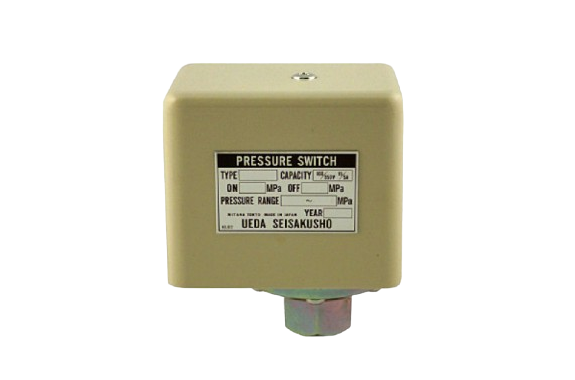
Manufacturer: Ueda Seisakusho Co., Ltd.
Model : P series
Features
- The P series is a pressure switch for direct load control designed for automatic control of various pumps and air compressors as well as all pneumatic and water pressure control applications.
- The difference from conventional pressure switches is that a long-life diaphragm is used in the pressure receiving part, and although the main operating lever is a slow motion mechanism, the contact opening and closing mechanism is a mechanism that operates reliably with a quick action lever.
- Even though it is small, it has a large breaking capacity of the contact and operates extremely accurately with little cumulative error, making it a long-life, highly reliable, compact pressure switch.
Product Information
| Item | Specification |
|---|---|
| Product Name | Indoor pressure switch |
| Size | W.79 x D.57 x H.91 mm |
| Durability | Electrical & Mechanical Life: 300,000 times or more |
| Weight | Approx. 540 g |
| Pressure Receiving Part | Diaphragm Type |
| Material | Synthetic rubber (NBR) |
| Applicable Capacity | Single-phase 110V・0.75kW Three-phase 220V・2.2kW |
| Insulation Resistance | DC 500V Megger — 100 MΩ or more |
| Dielectric Strength | AC 2,000V for 1 minute |
Specifications
| Model | Pressure Adjustment Range (Range) MPa | ON-OFF Pressure Differential Range (Diff.) MPa | Pressure Resistance (MPa) | ||
|---|---|---|---|---|---|
| Minimum | Maximum | Smallest | Largest | ||
| P-3 | 0.05 | 0.35 | 0.1 | 0.25 | 1.5 |
| P-6 | 0.05 | 0.6 | 0.1 | 0.3 | 1.5 |
| P-10 | 0.3 | 1.0 | 0.15 | 0.35 | 1.5 |
Model Code Explanation

| (A) | 3 = Maximum adjustable pressure: 0.35 MPa |
- The indoor pressure switch P Series (models: P-3, P-6, P-10) is a product developed for direct load control (e.g., pumps or compressors up to 2.2 kW output).
- Although its electrical capacity is designed to be greater than our other products, using it outdoors may cause poor insulation and negatively affect load operation.
Contact Current Rating Table
| Voltage (V) | Current (A) |
|---|---|
| 110 | 10 |
| 220 | 10 |
| 330 | 7 |
| 440 | 5 |


